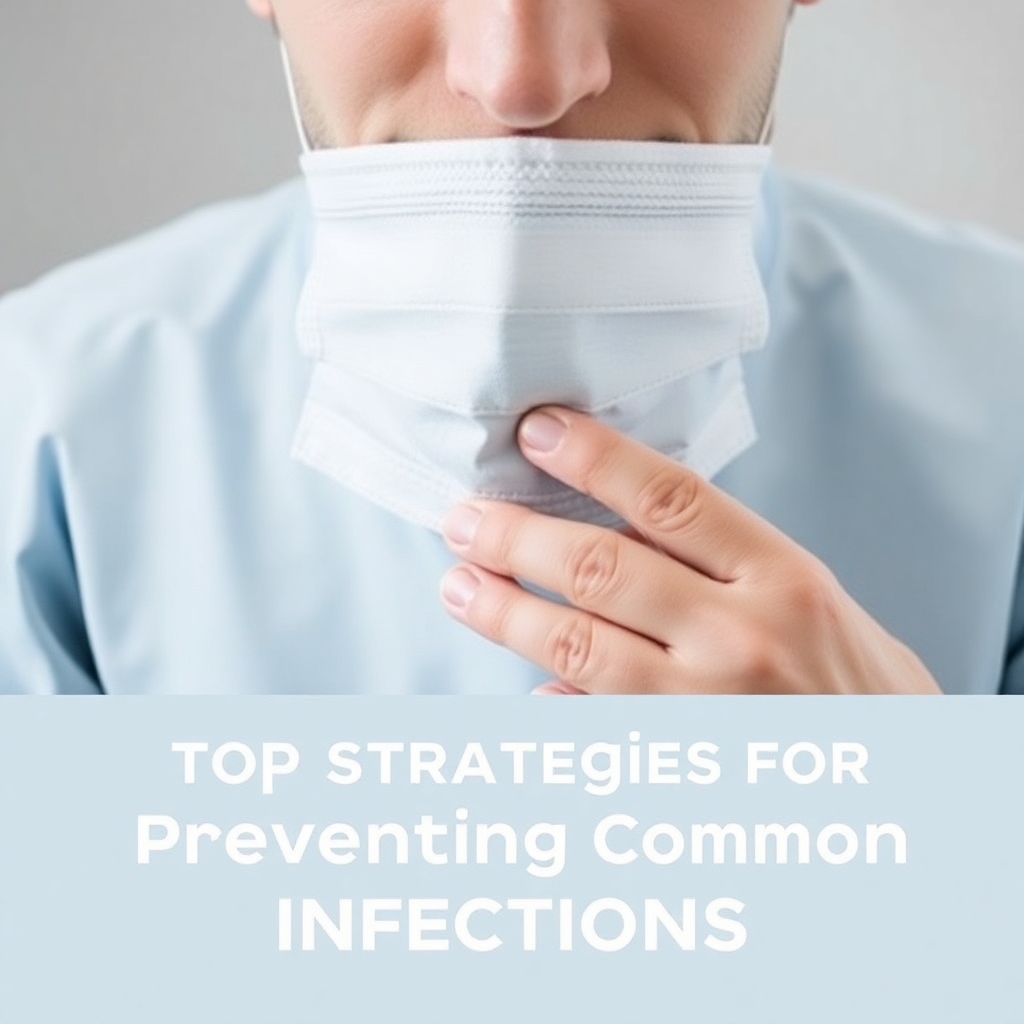Introduction
Infections and illnesses are inevitable to some extent, but the right preventive measures can significantly reduce their occurrence and impact. From the common cold to more severe conditions, understanding how infections spread and how to protect yourself is essential.
This comprehensive guide explores the causes of common infections, preventive measures, and lifestyle habits to keep you and your loved ones healthy year-round.
Understanding Common Infections and Illnesses

1. What Are Common Infections?
Infections occur when harmful microorganisms like bacteria, viruses, fungi, or parasites invade the body. These microorganisms can disrupt normal body functions, leading to illnesses such as:
- Respiratory Infections: Common cold, flu, bronchitis.
- Gastrointestinal Infections: Food poisoning, stomach flu.
- Skin Infections: Fungal infections, rashes, boils.
- Chronic Illness-Related Infections: Diabetic foot infections, respiratory conditions exacerbated by infections.
2. How Infections Spread
Understanding the modes of transmission is crucial for prevention.
- Direct Contact: Physical contact with an infected person.
- Indirect Contact: Touching contaminated surfaces or objects.
- Airborne Transmission: Inhalation of droplets from coughing or sneezing.
- Food and Water Contamination: Consuming contaminated food or drinks.
- Insect Bites: Mosquitoes, ticks, and other vectors can transmit diseases.
Top Strategies for Preventing Common Infections

1. Maintain Excellent Hygiene Practices
Hygiene is your first line of defense against infections.
- Handwashing: Wash hands with soap and water for at least 20 seconds, especially after using the restroom, before eating, or after sneezing.
- Personal Hygiene: Regular bathing and oral care prevent bacterial growth.
- Sanitization: Disinfect frequently-touched surfaces like door handles, smartphones, and keyboards.
2. Boost Your Immune System
A robust immune system helps your body fight infections effectively.
- Healthy Diet: Include immune-boosting foods like citrus fruits, nuts, green leafy vegetables, and yogurt.
- Exercise Regularly: Physical activity improves circulation and overall immune function.
- Adequate Sleep: Aim for 7–9 hours of quality sleep to support bodily repair processes.
- Stay Hydrated: Drinking plenty of water helps flush toxins out of the body.
3. Get Vaccinated
Vaccinations are a proven method to prevent severe infections.
- Childhood Immunizations: Follow your country’s immunization schedule for children.
- Seasonal Vaccines: Annual flu shots protect against influenza.
- Adult Vaccines: Vaccinate against diseases like shingles, pneumonia, and hepatitis.
4. Practice Safe Food and Water Habits
Contaminated food and water are major sources of infections.
- Wash Fresh Produce: Always clean fruits and vegetables before eating.
- Cook Food Thoroughly: Undercooked meat and seafood can harbor harmful bacteria.
- Store Food Properly: Refrigerate perishables promptly to avoid spoilage.
- Drink Clean Water: Use filtered or boiled water, especially in areas with unsafe drinking water.
5. Adopt a Healthy Lifestyle
Lifestyle choices directly impact your susceptibility to infections.
- Quit Smoking: Smoking weakens the respiratory system.
- Limit Alcohol Intake: Excess alcohol can impair your immune system.
- Manage Stress: Chronic stress compromises immunity; practice relaxation techniques like yoga and mindfulness.
Infection Prevention for Vulnerable Groups

1. Respiratory Infections
- Wear Masks: Especially during flu season or in crowded areas.
- Ventilate Rooms: Proper air circulation reduces airborne particles.
- Avoid Close Contact: Keep distance from people showing symptoms like coughing or sneezing.
2. Skin Infections
- Moisturize Daily: Prevents skin from cracking, which can harbor bacteria.
- Use Personal Items Only: Avoid sharing towels, razors, or cosmetics.
3. Gastrointestinal Infections
- Hygienic Food Preparation: Avoid cross-contamination in the kitchen.
- Stay Vigilant While Traveling: Stick to bottled water and well-cooked food in unfamiliar places.
4. Insect-Borne Diseases
- Apply Insect Repellent: Protect yourself from mosquitoes and ticks.
- Wear Protective Clothing: Cover exposed skin when in high-risk areas.
- Eliminate Breeding Grounds: Remove standing water to reduce mosquito habitats.
Recognizing Early Signs of Infection
Prompt attention to early symptoms can prevent an infection from worsening. Common warning signs include:
- Fever
- Persistent cough
- Fatigue
- Pain or swelling in localized areas
- Skin irritation or rashes
Medical Interventions for Prevention

1. Routine Health Checkups
Regular checkups can identify risk factors or early signs of infections.
2. Probiotics and Supplements
- Probiotics: Support gut health, reducing susceptibility to gastrointestinal infections.
- Supplements: Vitamins C, D, and zinc bolster immunity.
3. Judicious Use of Antibiotics
Antibiotics should only be used under medical supervision to avoid antibiotic resistance.
Myths and Misconceptions About Infection Prevention
1. Myth: Hand Sanitizers Replace Soap
Fact: Soap and water are more effective at removing certain germs.
2. Myth: Antibiotics Treat All Infections
Fact: Antibiotics only treat bacterial infections, not viral illnesses like the flu.
3. Myth: Vaccines Are Unsafe
Fact: Vaccines undergo rigorous testing to ensure safety and efficacy.
Infection Prevention for Vulnerable Groups

1. Children
- Encourage proper handwashing.
- Follow vaccination schedules.
2. Elderly
- Address underlying health conditions.
- Get vaccinated for pneumonia and shingles.
3. Chronic Disease Patients
- Monitor and manage health conditions like diabetes or heart disease to reduce infection risks.
Future Trends in Infection Prevention

1. AI in Healthcare
Artificial intelligence aids in predicting and managing outbreaks.
2. Advancements in Vaccines
mRNA technology and personalized vaccines are game-changers in combating infectious diseases.
3. Telemedicine
Remote healthcare access enhances early diagnosis and intervention.
Conclusion
Preventing infections and illnesses is a holistic effort involving hygiene, lifestyle habits, medical care, and awareness. By integrating these practices into your daily routine, you can protect yourself and your loved ones, ensuring a healthier and more fulfilling life.

